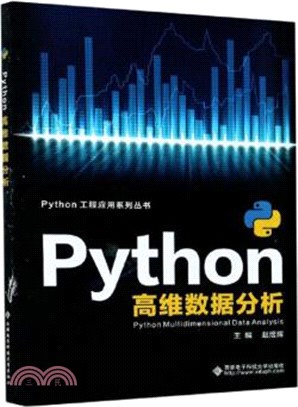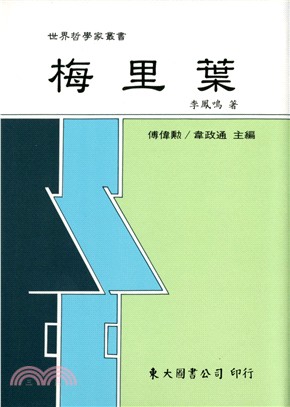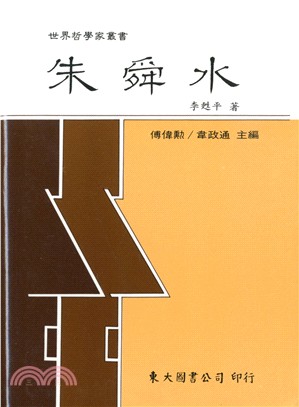Python高維數據分析(簡體書)
相關商品
商品簡介
目次
商品簡介
本書從矩陣計算如特徵值分解和奇異值分解出發,討論了正規方程的最小二乘法模型引出欠秩線性方程組的求解方法問題;然後介紹了兩種有損的降維方法,即主成分分析(主成分回歸)和偏最小二乘回歸,包括模型、 算法和多個實例,並擴展到線性回歸的正則化方法,給出了嶺回歸和Lasso的原理算法和實例;最後通過紅外光譜的標定遷移實例將線性模型擴展到遷移學習領域。
本書每章都有基於Python語言和Sklearn機器學習庫的紅外光譜數據集分析的實例。紅外光譜集是關於物質吸光率的純數據,可以與其標簽標示的數據物質濃度直接進行回歸分析,讀者在閱讀中可以把精力最大限度地集中在高維數據的建模、 算法實現和分析過程上。
本書既可作為信息管理和信息系統專業、 計算機相關專業和大數據專業的教學用書,也可作為從事光譜分析、 化學分析的工程人員及化學計量學研究人員的參考書,還適合對數據分析和研究感興趣的其他Python工程師學習閱讀。本書引用的原始文獻和數據對上述人員是非常有幫助的。
本書每章都有基於Python語言和Sklearn機器學習庫的紅外光譜數據集分析的實例。紅外光譜集是關於物質吸光率的純數據,可以與其標簽標示的數據物質濃度直接進行回歸分析,讀者在閱讀中可以把精力最大限度地集中在高維數據的建模、 算法實現和分析過程上。
本書既可作為信息管理和信息系統專業、 計算機相關專業和大數據專業的教學用書,也可作為從事光譜分析、 化學分析的工程人員及化學計量學研究人員的參考書,還適合對數據分析和研究感興趣的其他Python工程師學習閱讀。本書引用的原始文獻和數據對上述人員是非常有幫助的。
目次
Chapter 1 Basis of Matrix Calculation 1
1.1 Fundamental Concepts 1
1.1.1 Notation 1
1.1.2 “BiggerBlock” Interpretations of Matrix Multiplication 1
1.1.3 Fundamental Linear Algebra 3
1.1.4 Four Fundamental Subspaces of a Matrix 7
1.1.5 Vector Norms 8
1.1.6 Determinants 9
1.1.7 Properties of Determinants 10
1.2 The Most Basic Matrix Decomposition 11
1.2.1 Gaussian Elimination 11
1.2.2 The LU Decomposition 13
1.2.3 The LDM Factorization 13
1.2.4 The LDL Decomposition for Symmetric Matrices 13
1.2.5 Cholesky Decomposition 14
1.2.6 Applications and Examples of the Cholesky Decomposition 14
1.2.7 Eigendecomposition 16
1.2.8 Matrix Norms 24
1.2.9 Covariance Matrices 26
1.3 Singular Value Decomposition (SVD) 29
1.3.1 Orthogonalization 29
1.3.2 Existence Proof of the SVD 29
1.3.3 Partitioning the SVD 32
1.3.4 Properties and Interpretations of the SVD 33
1.3.5 Relationship between SVD and ED 35
1.3.6 Ellipsoidal Interpretation of the SVD 37
1.3.7 An Interesting Theorem 38
1.4 The Quadratic Form 39
1.4.1 Quadratic Form Theory 39
1.4.2 The Gaussian MultiVariate Probability Density Function 42
1.4.3 The Rayleigh Quotient 44
Chapter 2 The Solution of Least Squares Problems 46
2.1 Linear Least Squares Estimation 46
2.1.1 Example: Autoregressive Modelling 46
2.1.2 The LeastSquares Solution 48
2.1.3 Interpretation of the Normal Equations 50
2.1.4 Properties of the LS Estimate 51
2.1.5 Linear LeastSquares Estimation and the Cramer Rao Lower Bound 55
2.2 A Generalized “PseudoInverse” Approach to Solving the Leastsquares Problem 57
2.2.1 Least Squares Solution Using the SVD 57
2.2.2 Interpretation of the PseudoInverse 60
Chapter 3 Principal Component Analysis 62
3.1 Introductory Example 62
3.2 Theory 68
3.2.1 Taking Linear Combinations 68
3.2.2 Explained Variation 68
3.2.3 PCA as a Model 69
3.2.4 Taking More Components 70
3.3 History of PCA 71
3.4 Practical Aspects 71
3.4.1 Preprocessing 71
3.4.2 Choosing the Number of Components 72
3.4.3 When Using PCA for Other Purposes 79
3.4.4 Detecting Outliers 79
References 86
3.5 Sklearn PCA 87
3.5.1 Source Code 87
3.5.2 Examples 93
3.6 Principal Component Regression 94
3.6.1 Source Code 95
3.6.2 KFold CrossValidation 98
3.6.3 Examples 98
3.7 Subspace Methods for Dynamic Model Estimation in PAT Applications 106
3.7.1 Introduction 106
3.7.2 Theory 107
3.7.3 State Space Models in Chemometrics 109
3.7.4 Milk Coagulation Monitoring 110
3.7.5 State Space Based Monitoring 111
3.7.6 Results 112
3.7.7 Concluding remarks 116
3.7.8 Appendix 116
References 119
Chapter 4 Partial Least Squares Analysis 121
4.1 Basic Concept 121
4.1.1 Partial Least Squares 122
4.1.2 Form of Partial Least Squares 123
4.1.3 PLS Regression 125
4.1.4 Statistic 126
Reference 127
4.2 NIPALS and SIMPLS Algorithm 129
4.2.1 NIPALS 129
4.2.2 SIMPLS 132
References 137
4.3 Programming Method of Standard Partial Least Squares 138
4.3.1 Crossvalidation 138
4.3.2 Procedure of NIPALS 146
4.4 Example Application 150
4.4.1 Demo of PLS 150
4.4.2 Corn Dataset 157
4.4.3 Wheat Dataset 161
4.4.4 Pharmaceutical Tablet Dataset 163
4.5 Stack Partial Least Squares 165
4.5.1 Introduction 165
4.5.2 Theory of Stack Partial Least Squares 166
4.5.3 Demo of SPLS 170
4.5.4 Experiments 177
References 185
Chapter 5 Regularization 187
5.1 Regularization 187
5.1.1 Classification 187
5.1.2 Tikhonov Regularization 188
5.1.3 Regularizers for Sparsity 188
5.1.4 Other Uses of Regularization in Statistics and Machine Learning 189
5.2 Ridge Regression: Biased Estimation for Nonorthogonal Problems 190
5.2.1 Properties of Best Linear Unbiased Estimation 191
5.2.2 Ridge Regression 192
5.2.3 The Ridge Trace 193
5.2.4 Mean Square Error Properties of Ridge Regression 195
5.2.5 A General Form of Ridge Regression 199
5.2.6 Relation to Other Work in Regression 199
5.2.7 Selecting a Better Estimate of β 200
References 201
5.3 Lasso 202
5.3.1 Introduction 202
5.3.2 Theory of the Lasso 203
References 208
5.4 The Example of Ridge Regression and Lasso Regression 208
5.4.1 Example 208
5.4.2 Practical Example 211
5.5 Sparse PCA 216
5.5.1 Introduction 216
5.5.2 Motivation and Method Details 218
5.5.3 SPCA for p ≥ n and Gene Expression Arrays 222
5.5.4 Demo of SPCA 223
References 227
Chapter 6 Transfer Method 228
6.1 Calibration Transfer of Spectral Models[1] 228
6.1.1 Introduction 228
6.1.2 Calibration Transfer Setting 229
6.1.3 Related Work 231
6.1.4 New or Adapted Methods 235
6.1.5 Standardfree Alternatives to Methods Requiring Transfer Standards 236
References 237
6.2 PLS Subspace Based Calibration Transfer for NIR Quantitative Analysis 240
6.2.1 Calibration Transfer Method 241
6.2.2 Experimental 242
6.2.3 Results and Discussion 243
6.2.4 Conclusion 252
References 252
6.3 Calibration Transfer Based on Affine Invariance for NIR without Standard Samples 252
6.3.1 Theory 253
6.3.2 Experimental 257
6.3.3 Results and Discussion 258
6.3.4 Conclusions 266
1.1 Fundamental Concepts 1
1.1.1 Notation 1
1.1.2 “BiggerBlock” Interpretations of Matrix Multiplication 1
1.1.3 Fundamental Linear Algebra 3
1.1.4 Four Fundamental Subspaces of a Matrix 7
1.1.5 Vector Norms 8
1.1.6 Determinants 9
1.1.7 Properties of Determinants 10
1.2 The Most Basic Matrix Decomposition 11
1.2.1 Gaussian Elimination 11
1.2.2 The LU Decomposition 13
1.2.3 The LDM Factorization 13
1.2.4 The LDL Decomposition for Symmetric Matrices 13
1.2.5 Cholesky Decomposition 14
1.2.6 Applications and Examples of the Cholesky Decomposition 14
1.2.7 Eigendecomposition 16
1.2.8 Matrix Norms 24
1.2.9 Covariance Matrices 26
1.3 Singular Value Decomposition (SVD) 29
1.3.1 Orthogonalization 29
1.3.2 Existence Proof of the SVD 29
1.3.3 Partitioning the SVD 32
1.3.4 Properties and Interpretations of the SVD 33
1.3.5 Relationship between SVD and ED 35
1.3.6 Ellipsoidal Interpretation of the SVD 37
1.3.7 An Interesting Theorem 38
1.4 The Quadratic Form 39
1.4.1 Quadratic Form Theory 39
1.4.2 The Gaussian MultiVariate Probability Density Function 42
1.4.3 The Rayleigh Quotient 44
Chapter 2 The Solution of Least Squares Problems 46
2.1 Linear Least Squares Estimation 46
2.1.1 Example: Autoregressive Modelling 46
2.1.2 The LeastSquares Solution 48
2.1.3 Interpretation of the Normal Equations 50
2.1.4 Properties of the LS Estimate 51
2.1.5 Linear LeastSquares Estimation and the Cramer Rao Lower Bound 55
2.2 A Generalized “PseudoInverse” Approach to Solving the Leastsquares Problem 57
2.2.1 Least Squares Solution Using the SVD 57
2.2.2 Interpretation of the PseudoInverse 60
Chapter 3 Principal Component Analysis 62
3.1 Introductory Example 62
3.2 Theory 68
3.2.1 Taking Linear Combinations 68
3.2.2 Explained Variation 68
3.2.3 PCA as a Model 69
3.2.4 Taking More Components 70
3.3 History of PCA 71
3.4 Practical Aspects 71
3.4.1 Preprocessing 71
3.4.2 Choosing the Number of Components 72
3.4.3 When Using PCA for Other Purposes 79
3.4.4 Detecting Outliers 79
References 86
3.5 Sklearn PCA 87
3.5.1 Source Code 87
3.5.2 Examples 93
3.6 Principal Component Regression 94
3.6.1 Source Code 95
3.6.2 KFold CrossValidation 98
3.6.3 Examples 98
3.7 Subspace Methods for Dynamic Model Estimation in PAT Applications 106
3.7.1 Introduction 106
3.7.2 Theory 107
3.7.3 State Space Models in Chemometrics 109
3.7.4 Milk Coagulation Monitoring 110
3.7.5 State Space Based Monitoring 111
3.7.6 Results 112
3.7.7 Concluding remarks 116
3.7.8 Appendix 116
References 119
Chapter 4 Partial Least Squares Analysis 121
4.1 Basic Concept 121
4.1.1 Partial Least Squares 122
4.1.2 Form of Partial Least Squares 123
4.1.3 PLS Regression 125
4.1.4 Statistic 126
Reference 127
4.2 NIPALS and SIMPLS Algorithm 129
4.2.1 NIPALS 129
4.2.2 SIMPLS 132
References 137
4.3 Programming Method of Standard Partial Least Squares 138
4.3.1 Crossvalidation 138
4.3.2 Procedure of NIPALS 146
4.4 Example Application 150
4.4.1 Demo of PLS 150
4.4.2 Corn Dataset 157
4.4.3 Wheat Dataset 161
4.4.4 Pharmaceutical Tablet Dataset 163
4.5 Stack Partial Least Squares 165
4.5.1 Introduction 165
4.5.2 Theory of Stack Partial Least Squares 166
4.5.3 Demo of SPLS 170
4.5.4 Experiments 177
References 185
Chapter 5 Regularization 187
5.1 Regularization 187
5.1.1 Classification 187
5.1.2 Tikhonov Regularization 188
5.1.3 Regularizers for Sparsity 188
5.1.4 Other Uses of Regularization in Statistics and Machine Learning 189
5.2 Ridge Regression: Biased Estimation for Nonorthogonal Problems 190
5.2.1 Properties of Best Linear Unbiased Estimation 191
5.2.2 Ridge Regression 192
5.2.3 The Ridge Trace 193
5.2.4 Mean Square Error Properties of Ridge Regression 195
5.2.5 A General Form of Ridge Regression 199
5.2.6 Relation to Other Work in Regression 199
5.2.7 Selecting a Better Estimate of β 200
References 201
5.3 Lasso 202
5.3.1 Introduction 202
5.3.2 Theory of the Lasso 203
References 208
5.4 The Example of Ridge Regression and Lasso Regression 208
5.4.1 Example 208
5.4.2 Practical Example 211
5.5 Sparse PCA 216
5.5.1 Introduction 216
5.5.2 Motivation and Method Details 218
5.5.3 SPCA for p ≥ n and Gene Expression Arrays 222
5.5.4 Demo of SPCA 223
References 227
Chapter 6 Transfer Method 228
6.1 Calibration Transfer of Spectral Models[1] 228
6.1.1 Introduction 228
6.1.2 Calibration Transfer Setting 229
6.1.3 Related Work 231
6.1.4 New or Adapted Methods 235
6.1.5 Standardfree Alternatives to Methods Requiring Transfer Standards 236
References 237
6.2 PLS Subspace Based Calibration Transfer for NIR Quantitative Analysis 240
6.2.1 Calibration Transfer Method 241
6.2.2 Experimental 242
6.2.3 Results and Discussion 243
6.2.4 Conclusion 252
References 252
6.3 Calibration Transfer Based on Affine Invariance for NIR without Standard Samples 252
6.3.1 Theory 253
6.3.2 Experimental 257
6.3.3 Results and Discussion 258
6.3.4 Conclusions 266
主題書展
更多主題書展
更多書展本週66折
您曾經瀏覽過的商品
購物須知
大陸出版品因裝訂品質及貨運條件與台灣出版品落差甚大,除封面破損、內頁脫落等較嚴重的狀態,其餘商品將正常出貨。
特別提醒:部分書籍附贈之內容(如音頻mp3或影片dvd等)已無實體光碟提供,需以QR CODE 連結至當地網站註冊“並通過驗證程序”,方可下載使用。
無現貨庫存之簡體書,將向海外調貨:
海外有庫存之書籍,等候約45個工作天;
海外無庫存之書籍,平均作業時間約60個工作天,然不保證確定可調到貨,尚請見諒。
為了保護您的權益,「三民網路書店」提供會員七日商品鑑賞期(收到商品為起始日)。
若要辦理退貨,請在商品鑑賞期內寄回,且商品必須是全新狀態與完整包裝(商品、附件、發票、隨貨贈品等)否則恕不接受退貨。

























